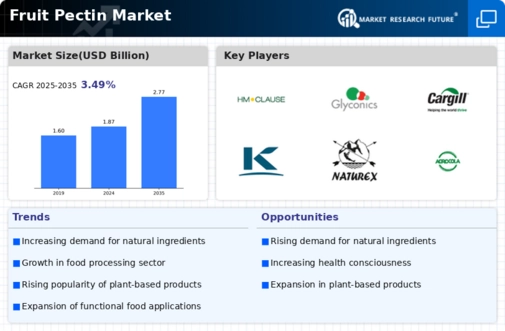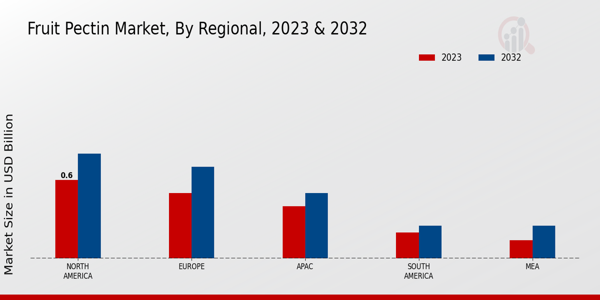Market Trends
Key Emerging Trends in the Fruit Pectin Market
The fruit pectin market is witnessing notable trends driven by the increasing consumer focus on natural and clean label ingredients in the food industry. Pectin, a soluble fiber found in fruits, is gaining popularity as a natural gelling agent and thickener in various food and beverage applications. With a rising demand for clean and simple ingredient lists, fruit pectin is becoming a preferred choice for food manufacturers seeking natural alternatives to synthetic thickeners and stabilizers. This trend is closely tied to the broader consumer movement towards healthier and more transparent food options.
The health and wellness trend is a significant driver shaping the fruit pectin market. Pectin is known for its dietary fiber content, and as consumers become more conscious of their nutritional intake, there is a growing interest in incorporating fiber-rich ingredients into their diets. Fruit pectin, derived from fruits like apples and citrus, provides a natural way to enhance the fiber content of various food products, contributing to its adoption as a functional ingredient in the market.
The Fruit Pectin Market experiences a surge in demand, particularly in fruit juices, popsicles, dairy, and diverse dietary products. This heightened interest reflects ongoing market trends, showcasing the versatile applications of fruit pectin across various food and beverage categories, meeting the evolving preferences of consumers.
The market is experiencing increased demand for low-sugar and sugar-free products, reflecting changing consumer preferences towards healthier alternatives. Fruit pectin's ability to create gels and textures without the need for excessive sugar aligns with this trend. As manufacturers respond to the call for reduced sugar content in jams, jellies, and other products, fruit pectin becomes a valuable ingredient for achieving desired textures while maintaining a healthier nutritional profile.
In the context of sustainability, fruit pectin stands out as a natural and plant-derived ingredient. With consumers showing a growing concern for environmental impact, food manufacturers are exploring sustainable sourcing practices and eco-friendly ingredients. Fruit pectin, obtained from fruit peels and pomace, aligns with these sustainability goals, providing a renewable and biodegradable option for food formulation.
The market is witnessing diversification in terms of product applications, with fruit pectin finding its way into an array of food and beverage categories. Beyond its traditional use in jams and jellies, fruit pectin is being incorporated into dairy products, confectionery, and even as a gelling agent in certain pharmaceutical formulations. This versatility allows manufacturers to cater to evolving consumer tastes and preferences, expanding the reach of fruit pectin across various sectors.
In response to the demand for clean and label-friendly ingredients, the fruit pectin market is experiencing innovations that focus on optimizing texture and functionality while minimizing the need for additional additives. This commitment to clean labeling aligns with consumer expectations for more natural and transparent product formulations. Manufacturers are investing in research and development to enhance the performance of fruit pectin in various applications, ensuring that it meets both functional and clean label criteria.











Leave a Comment